When you're not following a plan on social media, it's easy to forget to post regularly.
Additionally, creating image and video-based content that's meant to drive revenue for your business can seem far away from your bottom line.
However, nowadays, 71% of businesses are on the platform — to compete with other companies in your industry, then, it's critical you have a solid Instagram strategy in-place, particularly if your intended audience uses the app.
Fortunately, once you have an ideal plan for your Instagram content, you're able to create content more intentionally and ultimately drive more results for your team and your organization.
In this post, we'll cover everything from determining what kind of content you want to post, to picking a content theme. Then, we'll get into the details of planning individual posts.
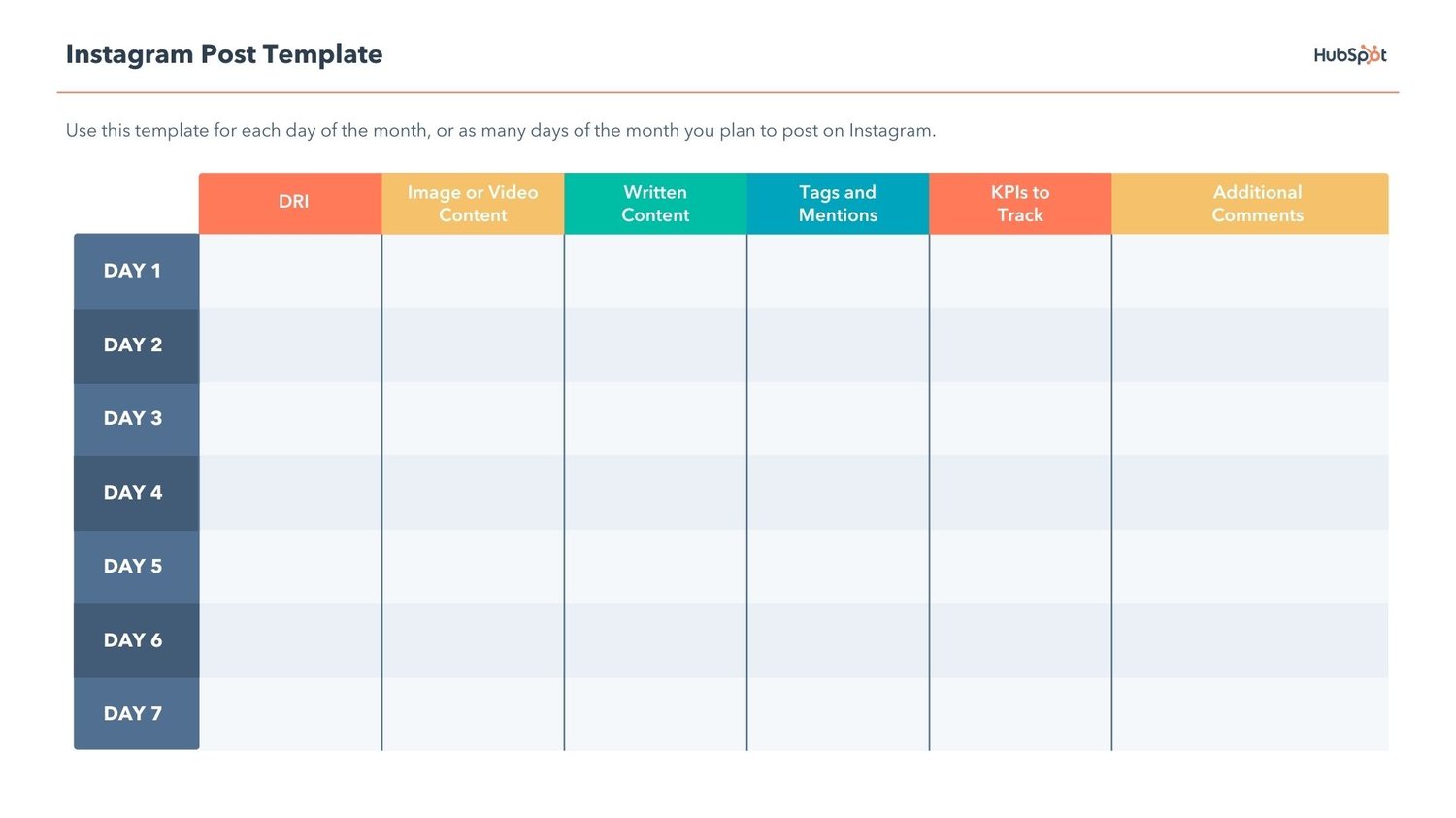 HubSpot, AdobeSpark, and Iconosquare teamed up to create a 30-day planning guide for business Instagram planning.
HubSpot, AdobeSpark, and Iconosquare teamed up to create a 30-day planning guide for business Instagram planning.
We've also thrown in 30 templates to help you get started. Click here to get the planning guide.
Type of Content to Post on Instagram
Regardless of which kind of content you decide to post, it should always be content that attracts your ideal audience. Think beyond your product, service, or office — what does your ideal customer actually care about, and what motivates them to follow a business account on Instagram?
If you know your audience is interested in consuming bite-sized education on social media, you might use Instagram to share industry tips and tricks. Videos or well-organized captions can be useful vehicles for providing your audience with well-researched information for their benefit, rather than the benefit of your business.
If your product or service lends itself to being photographed, consider sharing photos or videos of real customers using it. You can lighten your own content creation load by relying on user-generated content, too. Have your customers send in photos of your product in-action.
Here's an example of how Beats by Dre uses Instagram to showcase customers using their products:
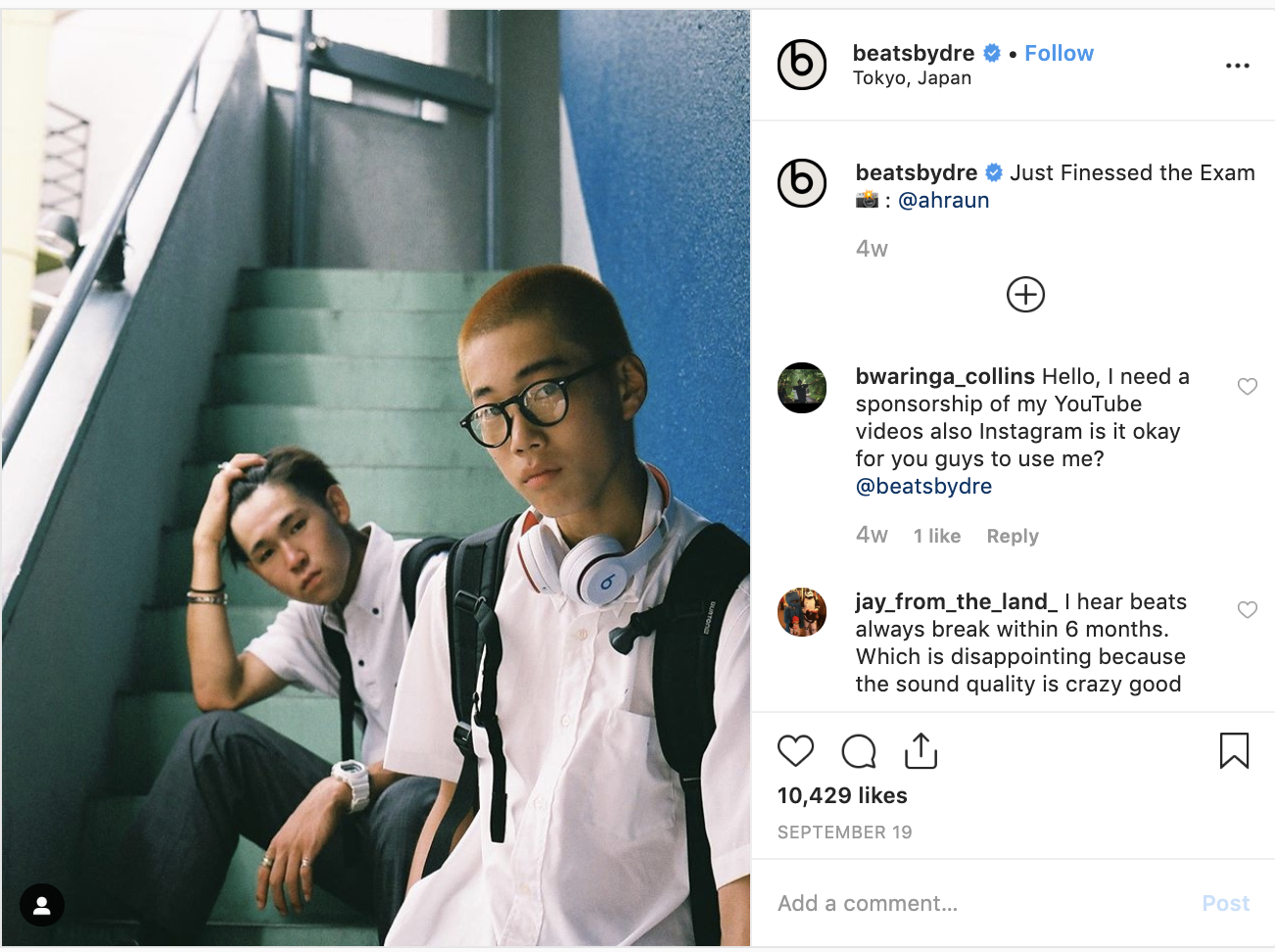
Still, there's no need to make these product or service posts promotional. Instead, the value for your Instagram following would come from drawing personal connections with real stories about how others have successfully used your product.
However, if your audience isn't consuming education on Instagram and your product or service isn't easily photographed, you can take a more aesthetically-focused route, posting images and videos that people would simply love to consume. These may not drive a significant number of conversions, but a visual-first Instagram can amass a large amount of followers.
The key with the aesthetically-pleasing route is to check in frequently to make sure your posts are driving actual value (perhaps in the form of brand awareness or community among your followers) for your business.
If you're unsure of the type of content you want to post or the kind of content that will succeed for your brand, pick the one that you believe your audience will be most interested in seeing — product-agnostic education, product-centric and usage-focused content, or aesthetically pleasing content — and try it consistently for a month.
Then, try another type for the following month and compare engagement rates. How many people are liking and commenting on your content? How many followers did you gain each month? What other business outcomes, if any, were impacted by your Instagram posts?
In addition to deciding the general topics you'll post on Instagram, you'll want to experiment and decide on which content formats you'll post. For example, if you take an educational approach, experiment with videos versus text-focused images, and various lengths of captions.
Alternatively, if your educational content lives on your blog, knowledge base, or in another library, consider using Instagram posts to point people to those resources rather than squeezing too much information into one Instagram.
For example, HubSpot Academy's Instagram often promotes in-depth courses that HubSpot Academy produces rather than trying to dive into the details in the caption, image, or video itself. The account keeps followers interested by sharing short clips and tips from the courses, too:
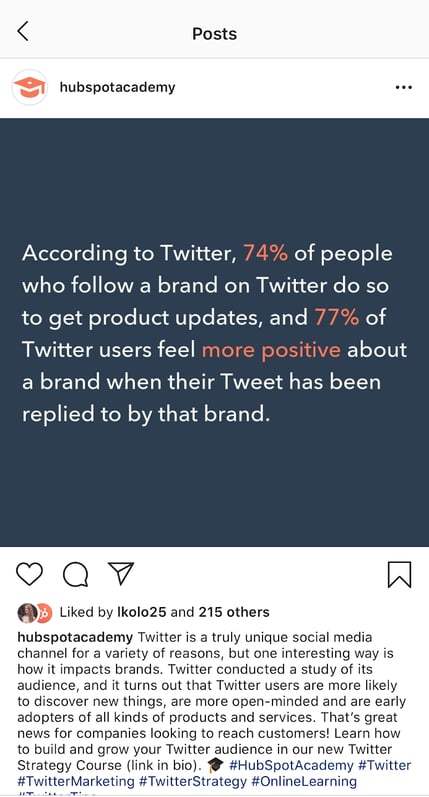
Additionally, we've put together this downloadable calendar of creative content ideas if you're not sure what type of content to try first.
Your Instagram's Visual Theme
Once you've decided on the type of content you want to post, you'll want to select a visual theme for your posts.
Aesthetic consistency will help you in several ways:
- When an Instagram user finds your business's account, the images will appear coordinated and well-thought-out.
- Your followers will begin to sense pattern in your content and pause when they see your post as they scroll because they recognize that pattern.
- When you've pre-selected a go-to font and color scheme, it takes some of the planning pressure off of you. There are fewer decisions to make for each new post.
If you use Adobe Spark, you can download our free Adobe Spark Instagram templates to get started on creating a new post with a template rather than starting from scratch. You'll also get access to the previously-mentioned calendar of content ideas.
To establish visual consistency across your posts, pay attention to the colors in your photos, the filters you use, the fonts you use in your images, and, if you'd like, the pattern of content types you're posting.
- Colors: Keep your brand colors top-of-mind when creating Instagram posts. Pick a few colors that complement your primary brand color and ensure that the most prominent color in each of your posts is one of those colors.
- Filters: When using filters, do so lightly, as over-editing can dilute the quality of your photos. If you decide to use filters, use the same one or two across all posts.
- Fonts: Select one font to use whenever you want to overlay text on photos or videos. Since Instagram is a friendly platform, aim to use an easy-to-read, sans-serif font and keep it the same across all posts. Use the same couple of font colors, too.
- Content Pattern: To create a visual pattern for your overall feed, make sure that every third post has a certain background color. Since Instagram has three columns in the grid view, you'll end up with a column that shows you thoughtfully plan your posts. You might consider using a white background with the same font style and color to share an industry tip for every third post, for example.
Tools for Making the Most of Your Instagram
In order to stay organized, we recommend using two types of tools — a post scheduling tool, and a tool that allows you to link to several different places from your Instagram bio.
By using a post scheduling tool, you'll be able to plan out as far in advance as you'd like, ensuring you have a steady stream of content ready to be posted even when other projects pop up in your day-to-day work. Posting consistently is important for follower retention and will give you more opportunities to experiment and figure out which posts get the most engagement.
Scheduling your posts also allows you to visualize which types of posts you have coming out and swap posts if need be. You can see the weeks for which you've planned enough content and those during which there are still empty slots.
You can also use a spreadsheet like this one (download for free here):
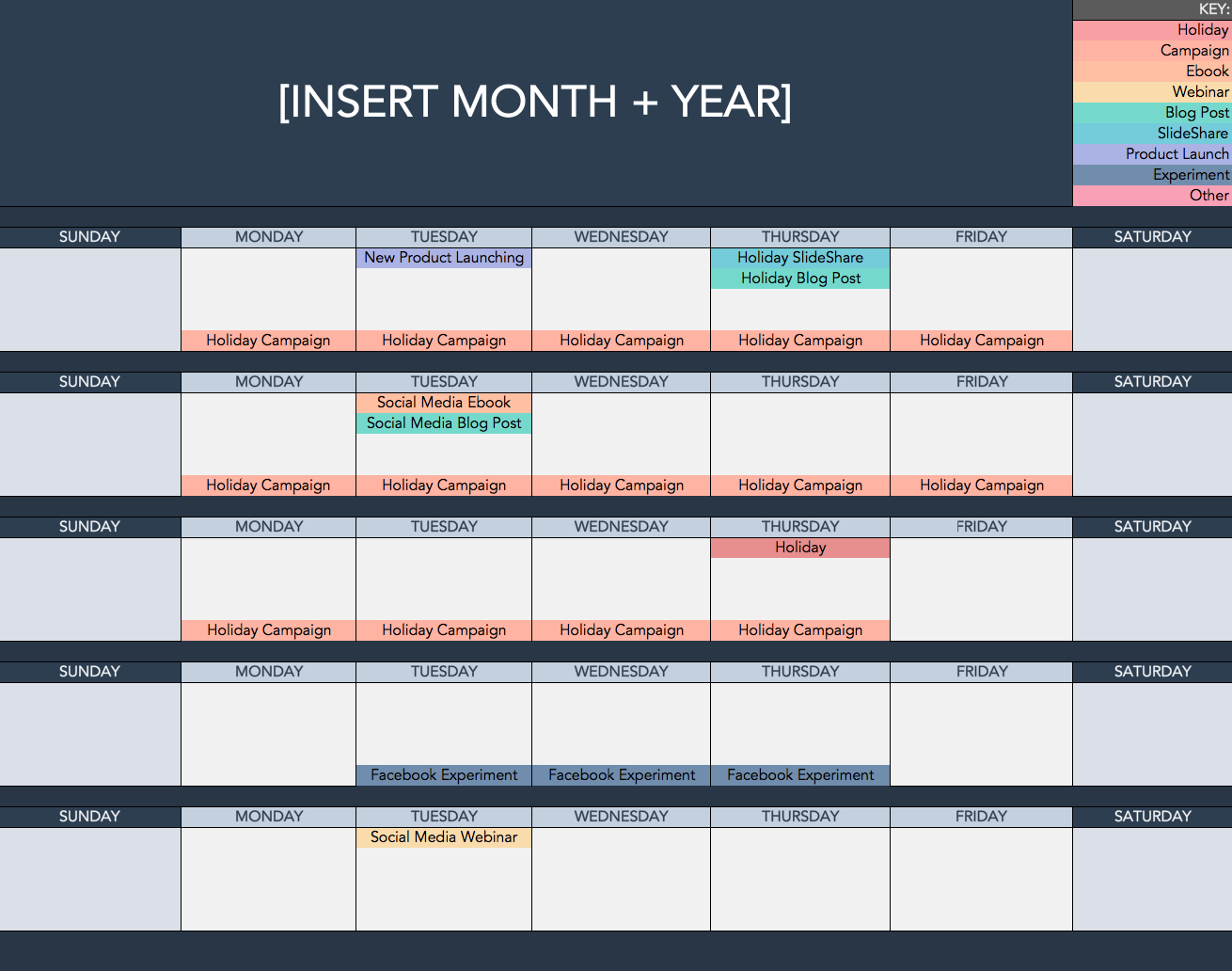
Examples of post scheduling tools: HubSpot Social Tools, Later, Buffer, Hopper
Since Instagram only allows you to place one hyperlink in your bio at the top of your profile, we also recommend investing a few dollars per month in a tool that lets you create one landing page that links out to several other pages.
Then, in individual posts, you can reference clickable links available at the link in your bio, which provides a much more user-friendly experience than having your followers copy a URL manually into their browser, toggling between apps.
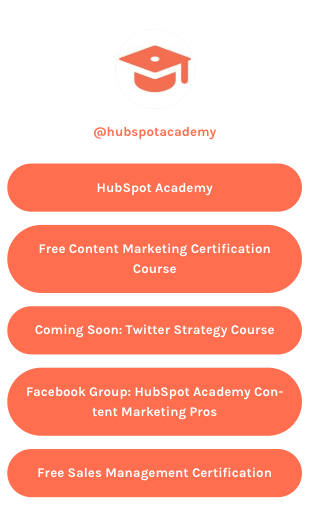
Examples of post scheduling tools: Linktree, Lnk.Bio, Link In Profile
Planning Process
Once you've decided on the content type and visual theme that you'll use on your brand's Instagram account, it's time to start planning posts.
Create a spreadsheet with the following columns (or download our free, pre-made spreadsheet along with planning templates for all of your other social media channels, too):
- Date of publication
- Time of publication
- Image caption
- Image file name or a link (if it has been uploaded to the web)
- The link that you'll add to your bio when the post goes live (or add to a Linktree-type multiple links tool)
- Campaign/Goal: What is the goal for this post? Are you trying to amass more followers? Drive sign-ups for your product, a free trial, a consultation, or another next step toward becoming a customer? Whatever it is, an articulated goal will help you make sure that each post exists for a purpose — you won't be creating a dead end for your followers, but rather an opportunity for continued engagement with your account, brand, or product.
When you're done, it should look like this:

A hint — duplicate the spreadsheet tab for Instagram Stories, as well, to leverage Instagram's other avenue for engaging with your followers. Stories are best used for interactive content like polls and quizzes, sharing lots of photos or videos from live events, and more casual, friendly updates.
Once you have your spreadsheet ready to go, decide on your frequency. We recommend ramping up to posting around three times per week.
Post at least once a week to establish a reliable posting pattern for your followers. You'll risk losing followers if people feel that they're not consistently seeing interesting or helpful content from your account.
To ensure you establish that consistent pattern, set dates and times for posting first. For example, if you decide to post every Monday, Wednesday, and Friday, fill in the date and time column with the next month's Mondays, Wednesdays, and Fridays.
Then, add a recurring event to your calendar for post planning for the following two to four weeks. Set a recurring, 10-minute calendar invitation at your selected posting times to reference your spreadsheet and quickly post whatever you've planned if you're not using an automated scheduling tool. With the planning sheet handy, you'll be able to simply copy and paste captions and links, and you can then locate the image easily.
When slotting specific posts into your spreadsheet, begin in whichever column you'd like. You could start by evenly splitting the rows into separate campaigns and then filling in the caption or image link for each post later.
If you already have a repository of photos that you can post, though, you might start pasting the links into the Image File Name/Link column and fill in the other columns afterward.
You'll also want to start creating more visual content for future posts. Consider repurposing event images that your company has taken, soliciting photos of your employees or customers using your product, or simply creating visually-appealing text graphics like this one on a tool like Canva or Photoshop.
Upload each photo to a centralized folder and make use of a standardized naming convention so that it's easy to find the file you're looking for. If you're not using a post scheduling tool, you'll likely have to post directly from your phone.
To easily access photos with their file names from your phone, you can upload photos to a Google Photos album on your computer and then use the Google Photos app on your phone to directly download the content prior to posting.
Finally, decide on your caption for each post. The ideal caption style depends on your audience and the type of content you're sharing. For example, aesthetics-focused content may perform best with a quirky, short, and clever caption, while education-focused content may be most likely shared and liked if the caption includes a couple of concise, clear tips.
Make sure to include three to five thoughtfully planned hashtags in your caption or in a comment on your own post to ensure it gets in front of new audiences. You'll want to include a mix of branded hashtags (eg. #HubSpotAcademy or #OnlineLearning) and trending hashtags so that your post is seen by more people.
You can research the hashtags you might want to use by typing them into Instagram (head to the 'Search' tab and then tap 'Tags') to see how much volume they get. Prioritize the higher-volume ones.
By taking a thoughtful approach to planning your Instagram content, you can ensure that your posts deliver value to your followers, convert those followers into leads or product users, and expand the reach of your brand's messaging to new audiences.
Editor's note: This post was originally published in October, 2019 and has been updated for comprehensiveness.
